Toyota Municipal Museum of Art by Yoshio Taniguchi
It has been quite a while since I had first visited this museum.
I visited Toyota Municipal Museum of Art in Toyota city, Aichi Prefecture, on Saturday, June 7, 1997. I have written about this architect before, referring to Kasai Rinkai Park Visitors Center (crystal view) ( No.5 ). It was such an unexpected point of view that I had found then to appreciate his work. I feel that Taniguchi,s works are more than how they are interpreted generally in the architectural world and so, I wanted to find something new about his work of art once again. We arrived at the museum around three o,clock in the afternoon, went through inside and outside and took a rest at the refreshment lounge discussing with my wife until five thirty.
The reason for writing down such thing is because by the time when I sat down in the refreshment lounge, I was not ready to express in words about my new finding. I would like to report here, how I finally started to translate my impression into words. I first had to review the general interpretation of Taniguchi and then had to explain how I was struggling to find an original point of view.
For example, the material variation used both in the interior and exterior floor was producing the difference and variation as we stepped on foot. Even if I experienced the architecture and felt something different, I realized fully that unless I defined what I felt in clear words, it would fade and pass by.
This is the report of how I integrated my observation of this work of art, discussing until around seven thirty, when the night lighting started its illumination. We were sitting relaxed on the warm granite curbstone of the pond when the illumination had been lit.
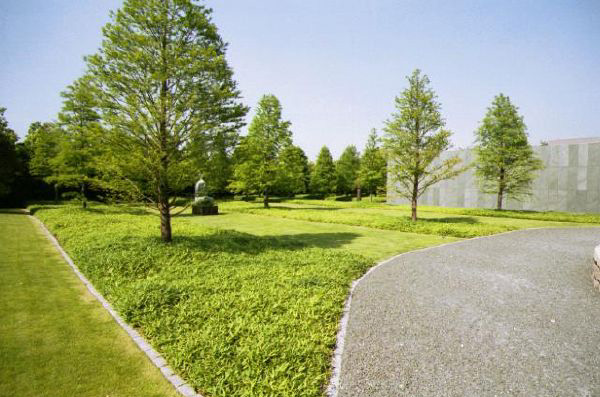
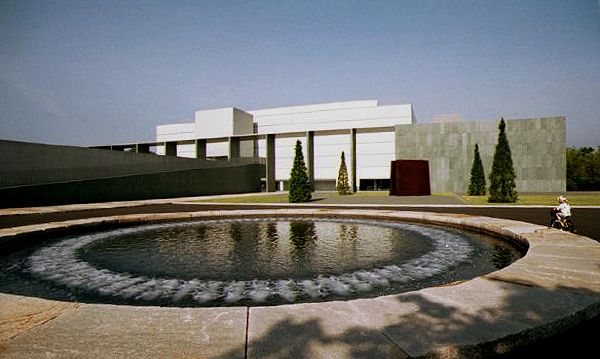
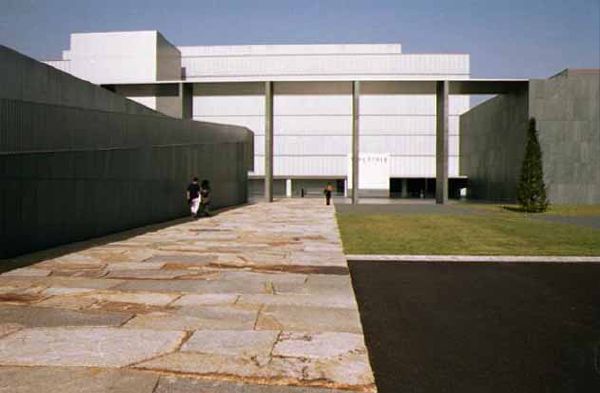
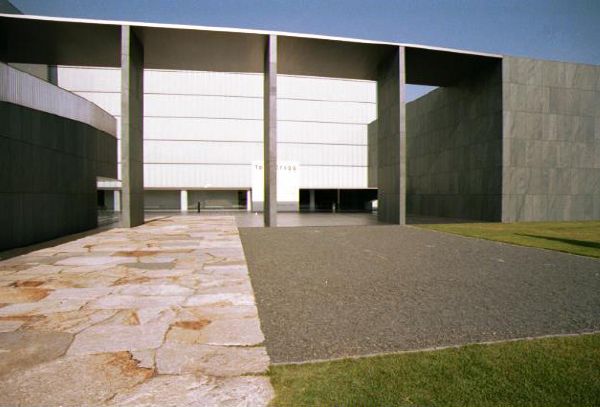
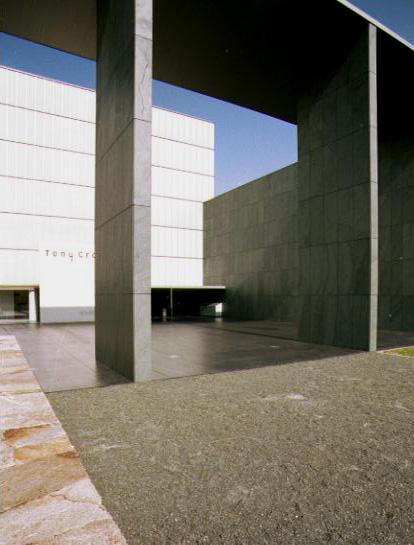
1. The keywords are “ touch felt on foot , “ sound” and “ low height” . Here is a pleasure of architecture revealed only by experiencing the place .
As we approach the museum, the white granite bordering the planting and the asphalt paving leads the driveway, ascending the hill until we reach portico where the floor is paved with red granite cut stone. As we walk through the passage stepping and feeling this rugged touch and the weight of natural stone on our feet, a high walled and light aluminum honeycomb canopy appears to welcome us. Then, suddenly, the touch felt on foot changes And even the color is turned from red natural stone to black polished stone. Why is it so different? What has been done? The floor is now flat and sounds like stepping on wood, although it is natural slate in deep black. Is it showing that we entered the building zone ? Within the building zone, we will find another exterior floor made of deep green natural slate, as a passage terrace. Each zone seems to carry some significance.
This day, we enjoyed the touch of various things, the touch of lawn, bamboo grass, red granite, natural slate, and asphalt. (Was it not allowed to step in ? There was no sign forbidding us to step in the lawn and the bamboo grass.) It seems to signify, by varying the texture, where to step in or not to step in, or even a place to enjoy. Inside the building, the floor we stepped on, which had a shining wood touch felt hard like a stone, marble touch etc.
Enclosing the small artificial pond near the portico and the large artificial pond constructed above the machinery room, red granites are used as curbstones, rather wide in width. Since the textural touch of these granites seemed so unmatching to the taste of architecture, I wondered why this ruggy and wide cut red granite was selected. As far as I understand now, these red granites are provided to be stepped on and to feel the touch. Just as they are used as the floor of the portico in the approach to be walked, they seemed to have been used as the curbstone of the pond with implication to be walked on. Although wide curbstones seem quite unmatching to the sophisticated taste of the architecture, somehow, a sense of stability is felt as we step on them. And what is more, it is set above the ground level, a reasonable height to sit. as if inviting us to sit on a chair. This was realized when we sat on it. We feel all these subtle points through experiencing the place and that seems to be the significance. It is expressed as textural differences. (Actually, even the little children were walking on the curbstone. People were rambling around stepping on the red granite framing the pond.)
When we look from the angle of the front approach, all the view seen seem inharmoniously combined, such as the red stone, deep green stone, black stone, black asphalt, conic trees, a big object made by rusted iron plate, a slanted slope by the large machinery room, and an exposed concrete wall. These combination seems to be far from what is known as Taniguchi,s architecture which is generally known for decency and nobleness. However, after hearing the sound of a fountain in the pond which seemed abstract and cosmic and matching the contemporary art objects here and there, I felt that in this aspect, the whole project may be expressing the abstract and cosmic inharmony of the contemporary art. (Since the sound of the fountain was calm, the machinery room sounded noisy.)
2. Making Divisions
Although it looks like one building, the museum is divided into three sections; special exhibition, theme exhibition and individual gallery special exhibition. We can go through all the exhibitions by one ticket. Every time we enter each section, we are asked to show the ticket. Since it is divided into sections, there are parts of the building where people can pass through without having the ticket. The terrace and the passage outside the museum building are opened to be passed through and together with the garden, people can use them without the ticket. This time we saw high school students rambling in the terrace and the passage. After the closing time there were children enjoying roller skating. During the night, the outside space is opened to the young couples to ramble around. However, inspite of the season, June and maybe due to the regional population, there were only few couples rambling about.
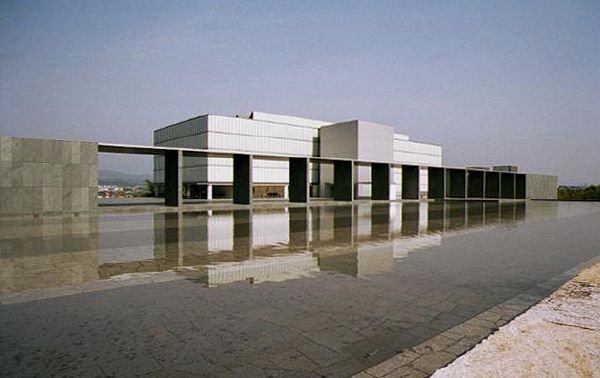
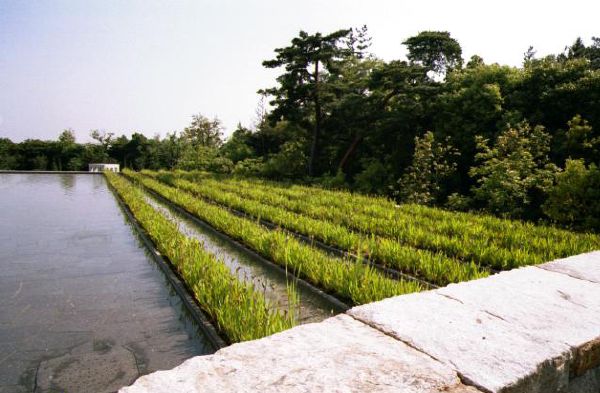
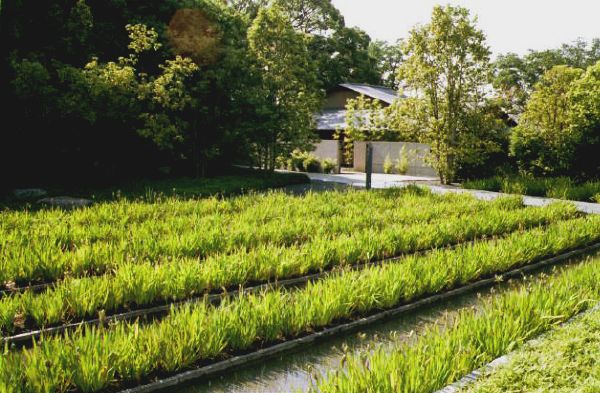
3. Centripetal tendency toward inside is observed in the exhibition space, whereas the centrifugal tendency toward outside is observed as making the story of the scenery.
The soft and homogeneous natural light come through the toplight. Through the glasswall, mild and homogeneous natural light comes in. The exhibition rooms and the hall with the ticket counter have no openings and as they are filled with abstract lighting, we almost take it as artificial and set up lighting. Here is a challenge made taking in natural light, which has also been the challenge made in the museum construction since Le Corbusier.
One of the concept of this museum is to view the surrounding scenery. It is a comprehensible theme since the location provides a view of the town naturally.
After going through the whole exhibition, we were in the restaurant drinking coffee and enjoying the view outside. Each frame of the canopy framed the scenery as if they were scenery pictures. And this profound frame, deep in depth, seems to be Taniguchi,s favorite and perspective wall producing the perspective view. The scenery included a tea ceremony house which was seen among the trees and willows, a house and a turret surrounded by Japanese pines. There were iris stocks planted in a way resembling the rice in the rice field, which looked as though enclosing all the above-mentioned scenery (It was after the flower had fallen). Here lies a landscape framing the nostalgic story of the age, when agriculture was the main production, making a silhouette in the setting sun. We can see here that the theme of architecture has made a shift and has been extended to include viewing the landscape from the structure (We don,t see the pictures of this landscape of the sunset on the hill of Toyota in the architectural magazines.). Taniguchi is known for designing only the structure, but he is doing more. All these phenomenon seem to show that, while virtual industry has become the main interest of people in this information age , the field of architecture is now concerned to exist in the possibility of real experience and thus we are confronting with architects and landscape designers who have started to respond to it.
It is impressive to see how the ceiling of all the wind break rooms is low as about 2100. The opening of the restaurant is also 2100 in height. This order of “low height” seems to come from the height of the tea ceremony house. The eaves height of tea ceremony house is 2100.(cross sectional plan view)
Also the tea ceremony house signifies the scenery viewed from the restaurant(as previously stated). Although the view from the restaurant and the presence of this tea ceremony house seem not at all correlated, they are given a close relation and a role in the whole plan of the museum.
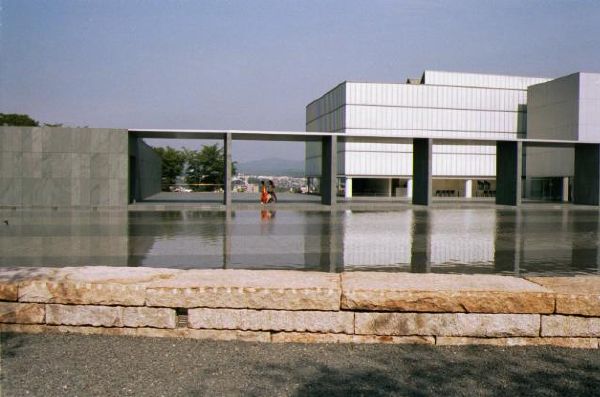
Upon approaching the individual gallery exhibition space from outside, the aluminum honeycomb canopy stands extended from the entrance approach. Since it is consecutively lined and the height of the canopy at the entrance space is so high, it is believed at first that it is in same height in this part,too. But it is not the same. Actually it is lowered still more in accord with the low height of the windbreak room and the opening of the restaurant. This is easily mistaken because the height of windbreak room and the opening of the restaurant becomes the module. And also as we stand in the site it is noticed that the planting is made preventing us from standing on a point where we can observe the different height at once. Planted trees and shrubs enclose and even hide some parts of three structures of the nostalgic scenery, here and there, so that the inharmony of the style may not stand out. The world of illusion is presented where things are noticed only after viewing the scenery intensively. It is recognized only after experiencing the place, the amusing illusion of height. It is revealed after sitting on the wide, red granite curbstone of the pond and viewing the museum structure, at a time of leave. The size of people walking through under the canopy is the hint. When we view the people and the structure simultaneously, the height of people becomes the module and the illusion of the height is clearly recognized. So, the trick is exposed at the granite curbstone of the pond whose appearance seemed so out of place from the building.
Following the case of Kasai Rinkai Park Visitors Center, here was shown another example of presenting the concept which is revealed only after observing people and architecture as a whole. As a matter of fact, there would be more to say about the project. Taniguchi,s architecture will be revealed more after we have made advance in the quality of appreciation.
The End 06,1997
----------------------------------------------------------------------------------------------
These are the pictures taken on June, 1998, which was the second visit to the museum.
Front entrance approach Stop-motion photography360degrees
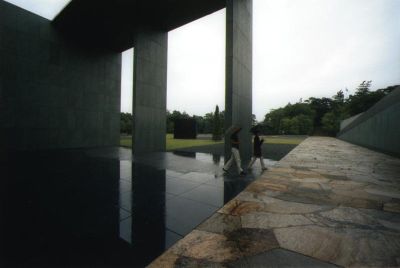
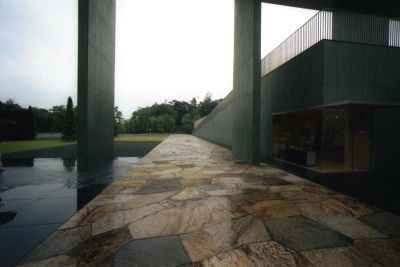
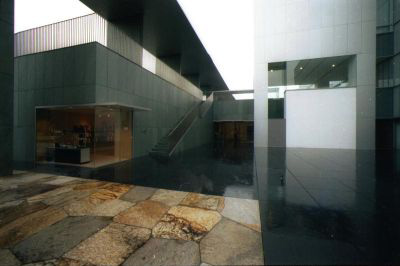
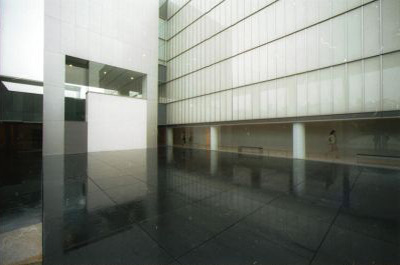
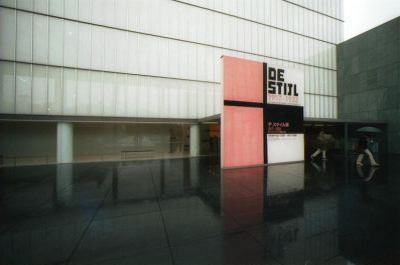
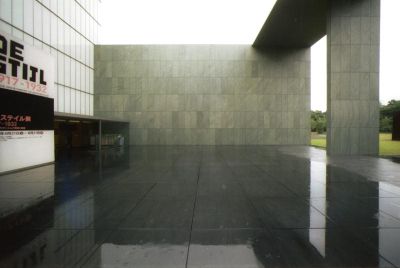
As I look at the pictures in this stage, the deep green stone and the white exhibition structure are plane composed in good order. Red granite natural stone pavement in the approach looks nicely adjusted to the whole scene, maybe due to have been sprinkled by the rain. Enclosing the patio in rectangular shape it seems to be composing both simplicity and complexity.
Entrance Panorama picture 360 degrees
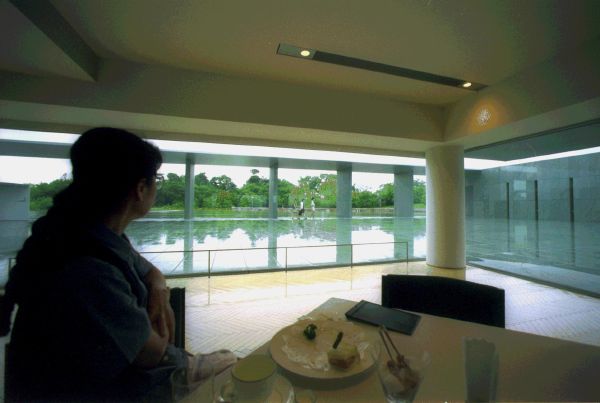
Looking at the patio from the restaurant. The patio is consecutively flat to the floor of the restaurant. It was raining this time and the floor stone was wet like the surface of a pond looking as if it was a part of the pond.
The canopy prevents people walking underneath from rain. It is an approach to the individual exhibition gallery, which looks like a picture cutting the scenery of trees.
Patio 360degree stop-motion picture
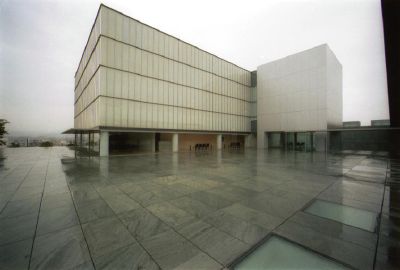
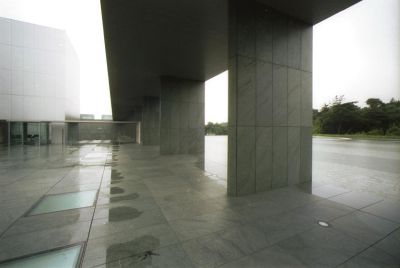
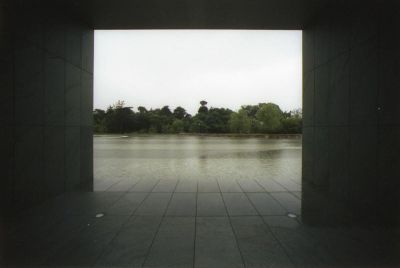
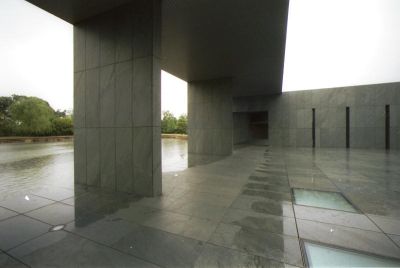
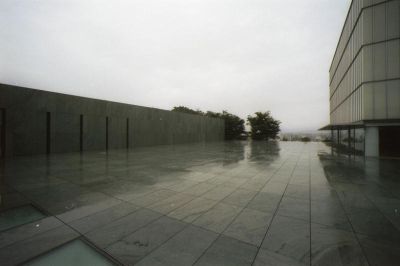
The town of Toyota is viewed as a focus point. The building on the left is the individual exhibition gallery. On the right side is the retaurant.
0113,2003
To Patio Panorama picture 360degree
---------------------------------------------------------------------------------------------
関連hp homepage link
豊田市美術館 Toyota Municipal Museum of Art
文化放送 ミュージアムと私 Museum and myself, Bunka Broadcasting Co.
とよた福祉ガイドブック 豊田市美術館紹介 Toyota Welfare Guidebook introducing Toyota Municipal Museum of Art
豊田市美術館・ろう付ハニカム製キャノピー Aluminum Honeycomb Canopy, Toyota Municipal Museum of Art
一般の人の感想 General Comments
コクヨ 展示ケースについてAbout the exhibition case,Kokuyo
不思議ネット 豊田氏美術館紹介 Introducing Toyota Municipal Museum of Art, Fushigi Net
back
